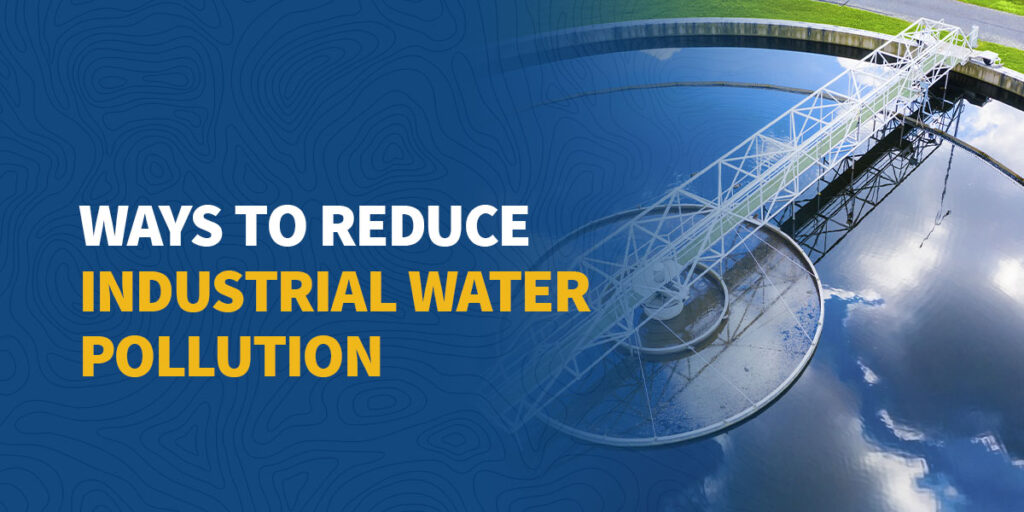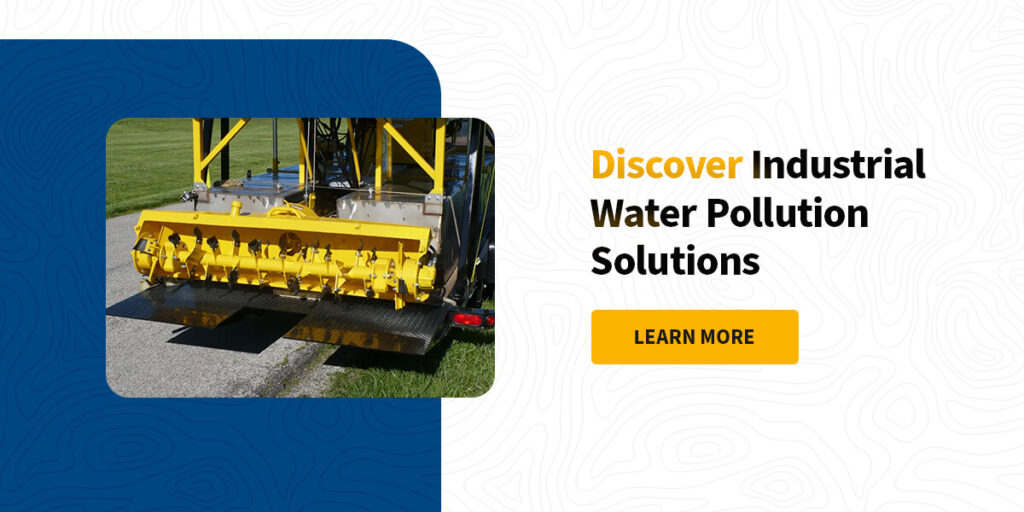Water pollution of any kind is a concern regarding human safety and environmental protection. There are various types of water pollution, but one of the major concerns in this area is industrial water pollution due to the potential scale of the pollution and the weight of the consequences.
Industries across the board are vital for economic development. Industry creates job opportunities, improves infrastructure and can lead to innovation — all of which can improve our way of living. As industries continue to grow, it is crucial to monitor their environmental impact and find ways to reduce industrial water pollution.
Causes of Water Pollution by Industries
Any body of water, from streams and rivers to reservoirs, lakes and oceans, can become polluted. Water can become contaminated in various ways. Agricultural runoff, sewage and wastewater, dumping, oil spills and even radioactive waste can all contribute to water sources becoming polluted. Unfortunately, industrial waste is one of the biggest causes of water contamination due to the sheer scale of industries to meet consumer demand.
Different types of industrial waste include:
- Solid waste, like plastic
- Toxic or hazardous waste, like the waste produced by hospitals
- Chemical waste, like used solvents
If not managed properly, these different forms of industrial waste can all end up in water systems and negatively impact people, animals and the environment.
Effects of Industrial Water Pollution
Water pollution has far-reaching consequences. Humans depend on clean water for so many important reasons — drinking, agriculture, energy production, tourism and recreation. Of course, marine life and the animals that feed on marine life also depend on uncontaminated water sources for survival. When water becomes polluted with industrial waste, it becomes unusable for human consumption, can lead to poor sanitation and illness and drastically reduce marine life populations.
The effects of industrially polluted water on human health include the possibility of:
- Cholera
- Diarrhea
- Dysentery
- Hepatitis A
- Polio
- Typhoid
- And an increase in death rates
Industrial water pollution also affects the environment and wildlife in several ways:
- Deplete oxygen: Certain pollutants from industrial waste, including nitrogen and phosphorous, can lead to water becoming oxygen-depleted. These pollutants promote excessive algae growth — called algae blooms — which further deplete oxygen levels as they die and decompose. Algae blooms eventually lead to dead spots where marine life suffocates and cannot survive.
- Harm fish: Industrial pollutants can directly harm fish if they ingest pollutants from oil spills, heavy metals, pesticides and other chemicals. Fish can end up with deformities, issues reproducing and other health problems that can lead to death.
- Damage ecosystems: Entire ecosystems may die off if industrial pollution is not kept in check. If fish and marine plants cannot thrive, it causes a knock-on effect, negatively impacting the wildlife that depends on these resources.
Laws and Regulations Regarding Industrial Water Pollution
Thankfully, governments and organizations take water pollution seriously, and laws are in place to protect resources. One of these laws is The Clean Water Act (CWA), which makes it unlawful to release pollutants into navigable waters without a permit. However, there is a great need for these laws to expand and become tighter so all bodies of water are protected from pollution. Laws can also expand to include the type of chemicals industries can use or produce as byproducts and to make environmental audits mandatory.
How to Reduce Industrial Water Pollution
Keeping our water clean is of utmost importance, but our civilization depends on industrial processes — they cannot just come to a halt. Because of this, it is vital we find ways to make all industries more eco-friendly and sustainable. Industries can aim to prevent and reduce water pollution in several ways. The first step could be brainstorming pollution prevention strategies and finding the most effective ways to implement these ideas. Pollution prevention and reduction will vary from industry to industry but can include some of the following elements:
- Wastewater treatment systems: An effective water treatment system is essential for addressing industrial wastewater pollution. Treating wastewater helps remove pollutants before releasing the water into the environment. Businesses can also look for ways to reuse wastewater once it has been treated rather than discharging it.

- Green chemistry: Businesses can explore ways of completing processes without using or producing harsh chemicals and other harmful byproducts. Using natural, biodegradable and recyclable products can lessen an industry’s environmental impact.
- Eco-audits: A cornerstone of pollution prevention strategies is conducting systematic environmental audits that help companies identify sources of pollution and the impact on water sources. In doing so, businesses can tailor solutions and stay compliant with local and federal regulations.
- Collaboration: Engaging stakeholders and collaborating with NGOs, suppliers, clients and even staff highlights the importance of reducing the company’s environmental footprint. Working together is an effective way of getting on the same page regarding ways to reduce waste and stay compliant.
Industrial Water Pollution Control Through Dredging
Dredging is a process that uses specialized equipment to remove unwanted sediments and debris from large bodies of water. When done professionally, dredging can be an excellent method for cleaning water of sediments and general pollutants.
There is evidence of how dredging can have a positive effect on polluted bodies of water. In one example, dredging improved the water quality of Lake Trummen, a polluted lake in Sweden. The lake was so polluted due to industrial wastewater and domestic sewage that no aquatic life survived, and the water was unusable. Scientists from the Institute of Limnology of Lund University planned a restoration project, and from 1970 to 1971, suction dredgers were used to clean up the lake. The project was successful — plankton and a range of aquatic species once again started to thrive.
Discover Industrial Water Pollution Solutions
Are you exploring ways to lessen your industry’s impact on natural water systems? Dredging can form part of a comprehensive pollution reduction strategy. You can rely on our knowledgeable team at GeoForm International Inc. to understand your industry’s specific needs and to supply you with industry-leading dredging equipment. At GeoForm International, we take pride in developing and selling innovative, quality dredging equipment that effectively removes sediment and debris from water. We manufacture and sell dredges, dredge systems and submersible pumps.
With a 6-inch submersible pump, a 66-inch-wide cutter head and a four-cylinder diesel engine, our Dino6 Sediment Removal System is effective for clearing various waterways, as is our larger Dino8 System. Contact GeoForm International to learn more about renting or buying our dredges and submersible pumps!


